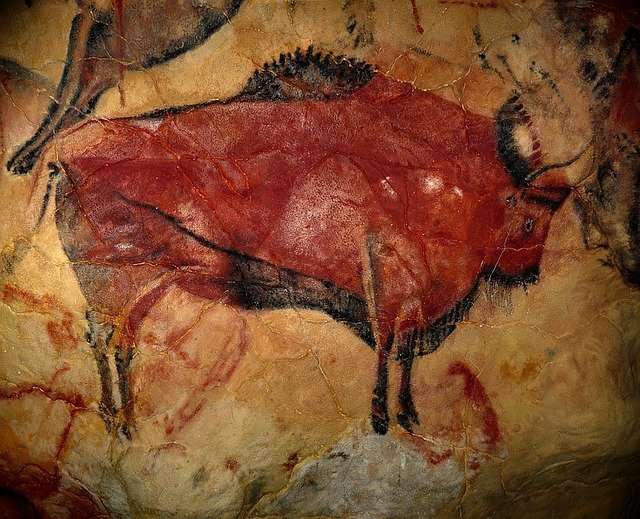Reflecting on my art practice, I’ve come to realize that my work is best described as a “little bit of life painting.” It’s not precise like medical illustration, nor does it have the vagueness of impressionism. It’s not photorealistic, but it doesn’t have the loose brush strokes of abstract expressionism. It’s not a cartoon, but it doesn’t have the level of detail found in photo-realistic art.
Trying to classify my work is an exercise in futility. I simply want to capture a little bit of life and share it with others. The little bit is subjective; what you see may be different than what I saw when I painted the piece. That’s okay, though. I’m happy that my work can evoke something in you beyond what I saw when I looked at life through my lens.
I’ve been working on a new piece lately, and I thought I’d let you in on the process. Perhaps this will help you to see what goes into one of these little bits of life that I paint so frequently.
I’m not sure when exactly I came up with the idea for this painting. Probably in the shower or something. I got the idea for it from a poster for some kind of training, where it said something about “taking care of your mental health” and “don’t leave them hanging”. Of course, it being a motivational poster, it was pretty cheesy and overdone. But still, it got me thinking about those old fashioned clothespins.
The first thing I did was to sketch out the basic idea in my sketchbook. Here’s what that looked like:
Here are some things you might notice:
-It’s not very detailed at all. At this point, I’m barely even considering how to make the thing look realistic. This stage is more about getting a sense of proportion and scale than anything else.
-The perspective is all wrong, but that doesn’t matter right now.
-I’m trying to figure out where to put the horizon line, and how tall each object will be in relation to the others
These are sketches, studies and finished paintings that reflect my intent to create a realistic representation of visual life in my works.
I have been working for over 35 years as a professional artist and illustrator. I have been experimenting with different styles, techniques and subjects. I have created traditional portraits, landscapes, still lifes and seascapes.
My current work emphasizes the use of color, light, shadow and texture to create a realistic atmosphere in my work.
As I paint everyday objects of life I continue to learn new things about the creative process.”
When I started painting, a friend gave me some good advice. She said: “The first thing you have to learn is that everything you paint is a lie.”
It took me a while to get it. Like most painters, I was trying to paint what I saw. But the statement is true and powerful. The only way to create art, at least the kind of art I wanted to make, is to present life as it is not. If you want your work to live on in the mind of someone who sees it, it has to be more than accurate; it has to be evocative, meaningful, suggestive. Even if you are making a slice-of-life scene with no narrative content, there must be something about your composition or execution that lifts it out of being just an accurate record of what’s there. The color choices and brushstrokes must add up to something more than the sum of their parts. That’s why I like this quote:”Painting is a process of adding and taking away until there is nothing left but the essence.” For me, that’s what artmaking feels like.
A few months ago, I was delighted to see an article on the cover of American Artist Magazine, reviewing a new book called The Artful Life. The author, Jan Greenberg, says that she has been blogging about art since 2004. I have been blogging about art since 2006 and found it very encouraging and inspiring to read someone else’s work in what had always seemed like a rather lonely field.
Towards the end of her article, Ms. Greenberg writes: “It’s interesting that we use the same word — art — to describe both the paintings on canvas and the paintings in our minds.” This is such a simple thought but one for which I have no answer. How do we then differentiate between imagination and reality? Is it because we can’t see those imagined paintings yet? Or because we can only see them with our eyes closed? If so, how can we trust our senses? Besides, what about those who paint open-eyed or with their eyes wide open (in astonishment) as they walk down the street; do they also paint in their mind? Aren’t they entitled to also be called artists?
I wonder if maybe there is another way of looking at it. Maybe we are all artists but only some of us are willing to put ourselves out
Even if we take a more academic approach to art, there is still a tendency to focus on the modern and the abstract. That is because we live in a time when most of our representational art was created within the last 150 years. We are so close to it that we don’t notice it any more. But it was different at other times and in other places.
In Renaissance Italy painting was representational. The best-known works from that period were huge paintings put up in public places for everyone to see. Those paintings were highly detailed, with scenes from classical mythology or the Bible or everyday life. The artists were trying to show what something looked like — not just a generalized version of what something looks like, but exactly how it looked under certain lighting conditions, from a certain angle, with certain kinds of material nearby. You would go see one of these paintings and say “hey, that’s my house!”
You can’t do that as easily with abstract art. In fact you can’t do it at all — an abstract painting doesn’t look like anything unless you know what it’s supposed to be before you look at it.*
Painting is the most difficult of the visual arts. The dictionary gives “to paint” as its first definition and “to describe” as its second. Paintings are meant to be looked at and described. We don’t say, “This painting does not represent well,” but rather, “It is not well painted.”
Painting’s relationship to description is a defining characteristic. Sculpture has its own set of problems, different from but no less difficult than those of painting. A sculpture may be hard to describe – Rodin’s The Burghers of Calais — or easy – Henry Moore’s Reclining Figure — but it is not inherently about description.
Trying to describe a painting inevitably leads us into a philosophical discussion about the nature of representation. Is it possible to create a painting that is an accurate reproduction? If so, how accurate? What is realistic? What constitutes shading? Can one make a statement with a painting? Can one make an unbiased statement with art? Is it possible to create a work of art without emotion? Can you use art as propaganda? Which medium has more capabilities: language or visual art? Does music have an advantage over visual art because sound can represent tone while color cannot represent shade?
How much detail should one put into


